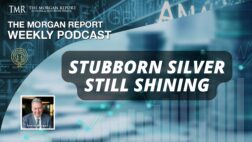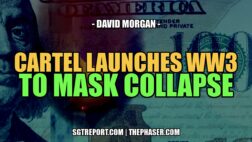Why Government Coin Sales ARE Meaningful
By Chris Marchese
Many Internet discussions of government coin sales conclude–“Those are meaningless amounts because they account for such a small percentage of total supply (Primary + Secondary Supply).” But only part of this statement is correct, that is they account for a relatively small percentage (~14%) of total supply.
However they are not meaningless, for several reasons. The first is that demand for silver coinage can increase very sharply. When the 2008 financial crisis took place demand for silver eagles doubled. After the financial crisis of 2008 the demand doubled AGAIN! That is correct; prior to 2008 the demand for US mint silver was about 10 million ounces per year. Financial crisis doubles the demand- interesting? And post 2008 many more people “woke up” to the idea that precious metals are a nonrecourse way of owning real money without interference. Even with the “recovery” the demand for silver of this type (government minted coins) has not abated—again interesting?
Could demand double again? Certainly if you consider the global economy is in a more dangerous place relative to 2008. More debt that cannot be serviced based on oil prices that no longer exist, monetary inflation going to the banking sector, and the rampant debt accumulation across the board.
Thus if government issued silver coinage were to double over 2014, it would increase total demand to over 140m oz. This is a significant increase and could cause prices to increases at least in a market absent of intervention.
.
Furthermore, because we don’t know how tight the silver market actually is, otherwise the demand needed for the physical market to overtake the paper market, could be a modest amount. All markets move at the margin and the last ounce sold at a given (low) price could be enough to see the price of silver gap up significantly. If we follow the logic an investment by a modest size fund could potentially trigger the price of silver to skyrocket.
Another reason is because government coin sales are a gauge for investment demand as a whole. Which means commercial bar demand by institutions has more competition as commercial bars are the raw material of most silver strikes by official mints? This is because some precious metals funds buy and hold commercial bars for investment purposes. More importantly are the retail investment bars.
Many precious metals investors are unaware of the details of the Chinese physical markets. While most of gold taken for delivery occur on major exchanges, the majority of silver taken for delivery occurs on much smaller, domestic exchanges which aren’t required to report deliveries such as the Shanghai White Platinum and Silver Exchange among others. But even if we just focus on the major exchanges i.e. the Shanghai Gold Exchange and Shanghai Futures Exchange, silver for delivery is material yet excluded from investment demand altogether in the GFMS Silver Survey and the CPM Silver Yearbook. Those not familiar with these exchanges would say “they are excluded because they are in commercial bar form and because both studies exclude commercial bars from investment demand, this makes logical sense.”
But what is so surprising is the silver taken for delivery isn’t in commercial bar form (1,000 oz. +/-). On the Shanghai Gold Exchange a market participant can take delivery of either 1 kilogram (32.15 oz.) or 15 Kilograms (482.25 oz.) and shouldn’t this be considered investment demand?
Deliveries on just the major exchanges have been increasing and it is likely silver deliveries have been increasing at a much faster rate as more locals frequent the smaller exchanges. That brings us to investment demand 1oz-to-100 oz. bars throughout the rest of the world. In 2014, physical bar investment just in India was 66.8m oz. and slightly over 100m oz. when North America is added. Is it odd, that record sales by the U.S. mint and Royal Canadian Mint more or less ebb and flow with demand for coinage?
In summary, government coin sales are a good barometer for true investment demand worldwide. Additionally, government coin sales are meaningful to the silver balance and therefore prices. At this point in time it may seem as though government coin sales are immaterial as well as retail silver bar demand. Further, it may continue to seem that way until it doesn’t, and that my friends is at the point where the physical market allows for true price discovery.
Chris Marchese is the Senior Equity and Economic Analyst for The Morgan Report. He is co-author of The Silver Manifesto available on Amazon with the electronic version available across the web. He holds advanced degrees and worked as an equity analyst for a major Wall Street firm before becoming independent where his views would not be censored.
David Morgan is a precious metals aficionado armed with degrees in finance and economics as well as engineering, he created the Silver-Investor.com website and originated The Morgan Report, a monthly that covers economic news, overall financial health of the global economy, currency problems, and the key reasons for investing in precious metals.
As publisher of The Morgan Report, he has appeared on CNBC, Fox Business, and BNN in Canada. He has been interviewed by The Wall Street Journal, Futures Magazine, The Gold Report and numerous other publications. If there is only one thing to teach you about this silver bull market it is this… 90% of the move comes in the last 10% of the time! Where will you be when this happens?
Offer does not apply to Premium Memberships.



